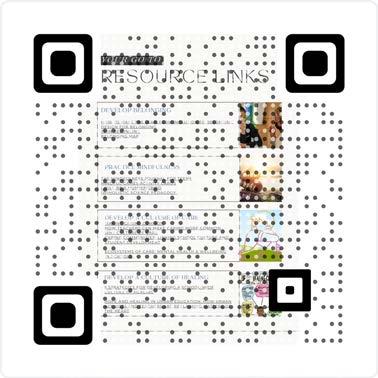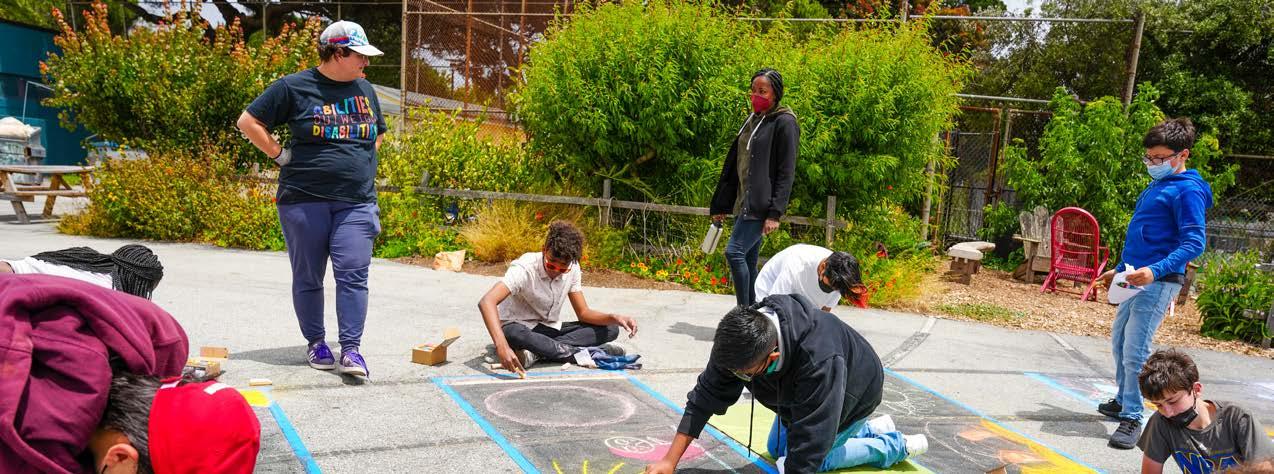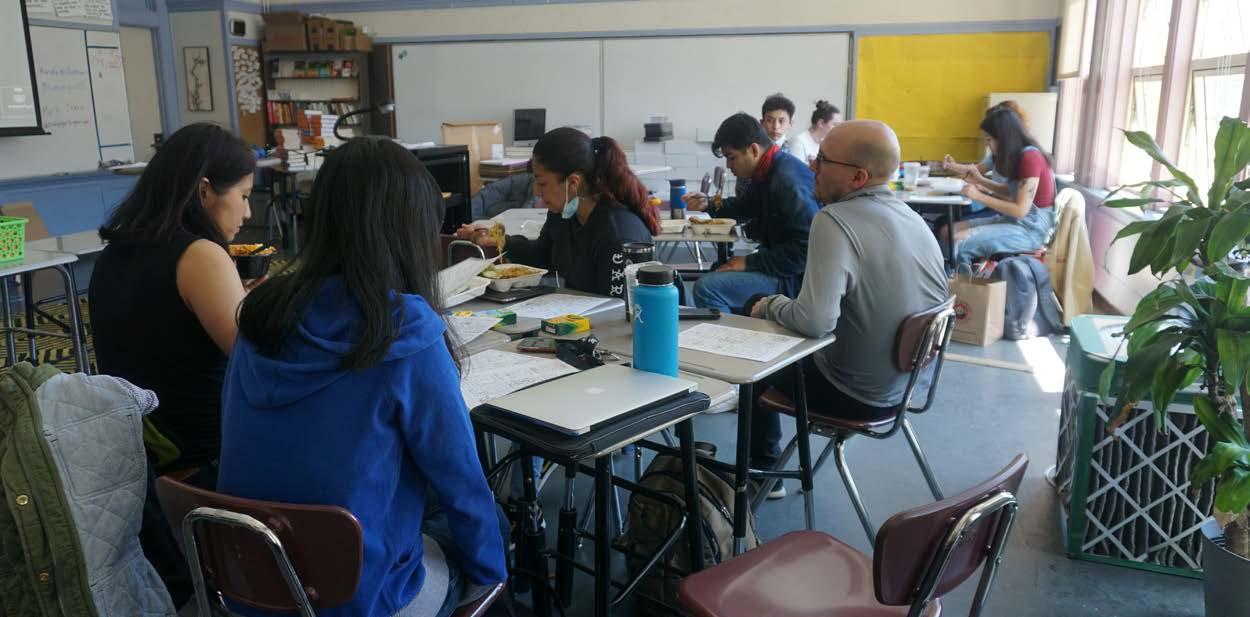

STARTER GUIDE
Discover the Basics of Liberatory STEAM Education
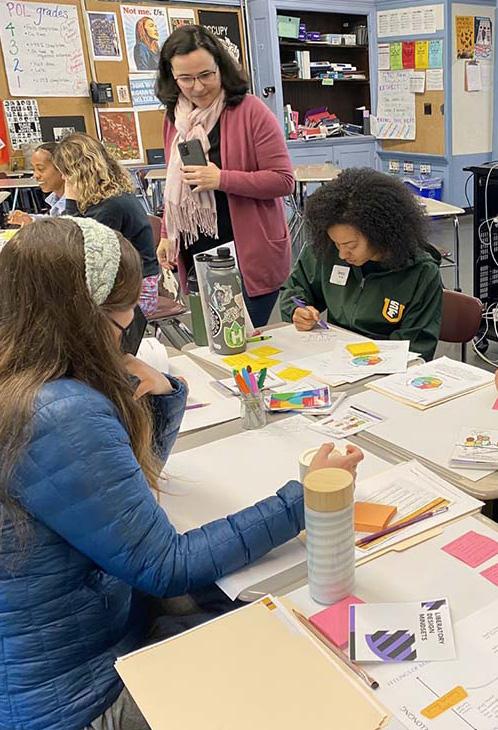
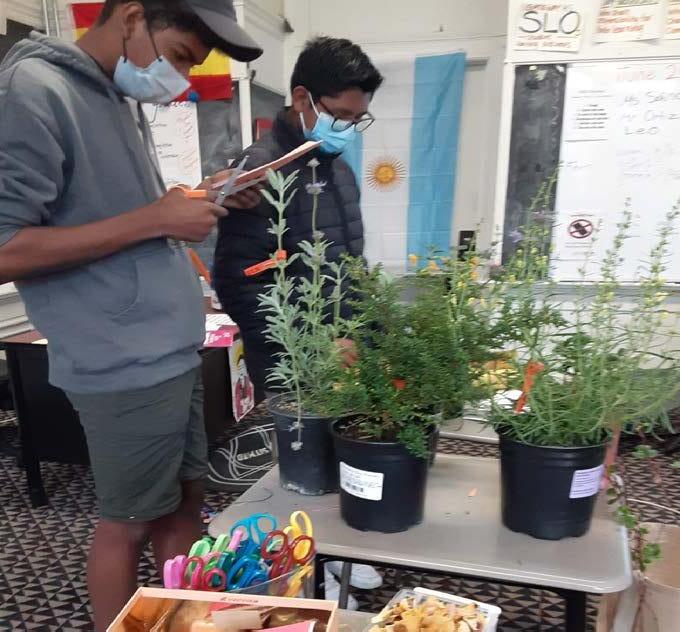 Written by Dr. Imène Ghernati
Written by Dr. Imène Ghernati
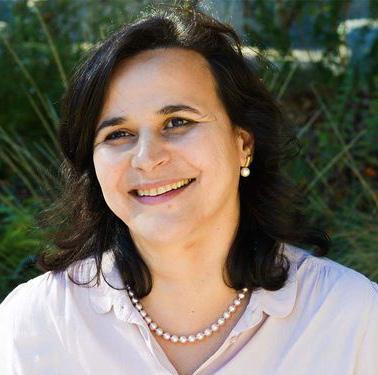
The Author And The STEAM Learning Institute

Dr. Imène Ghernati (إيمان غرناطي) is the founder of the STEAM Learning Institute. She has over 25 years of education experience preparing students, teachers, and leaders for diverse classrooms. A former veterinarian and scientist, she has spent the past 15 years in urban education in the Bay Area. She is also the co-founder of the Summer Academy Program, a partnership between Gateway Schools and the University of San Francisco, where she directed the program for two years and started a Makerspace. Imène is from the Algerian Diaspora and has lived in the Bay area since 2008. She is the proud mother of two multicultural boaaays. She writes using “We” as she believes her knowledge results from many interactions with humans and non-human beings.
The mission of the institute is to envision a world where all learners have equitable access to the emergent power and potential of STEAM education. It is a collaborative research inquiry into inclusive STEAM education. We imagine new ways of being together. We provide a collaborative space that nurtures relationships, shares resources, and provide support and training to individuals and/or teams.
We are a non-profit, and you can make a tax-deductible donation if you find value and benefit from this guide. You can donate to the institute to sustain our work.
If you share it with others, please make sure to credit it.
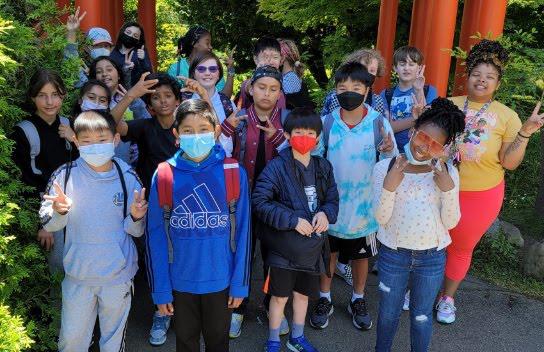
01 02 03 04
An Invitation
What this guide is and why it matters.
General Principles
Belonging, mindfulness, care and healing. Liberating STEAM Case Studies
Makerspace, street art, joy and liberatory design.
Additional resources
Continue on an active learning journey.
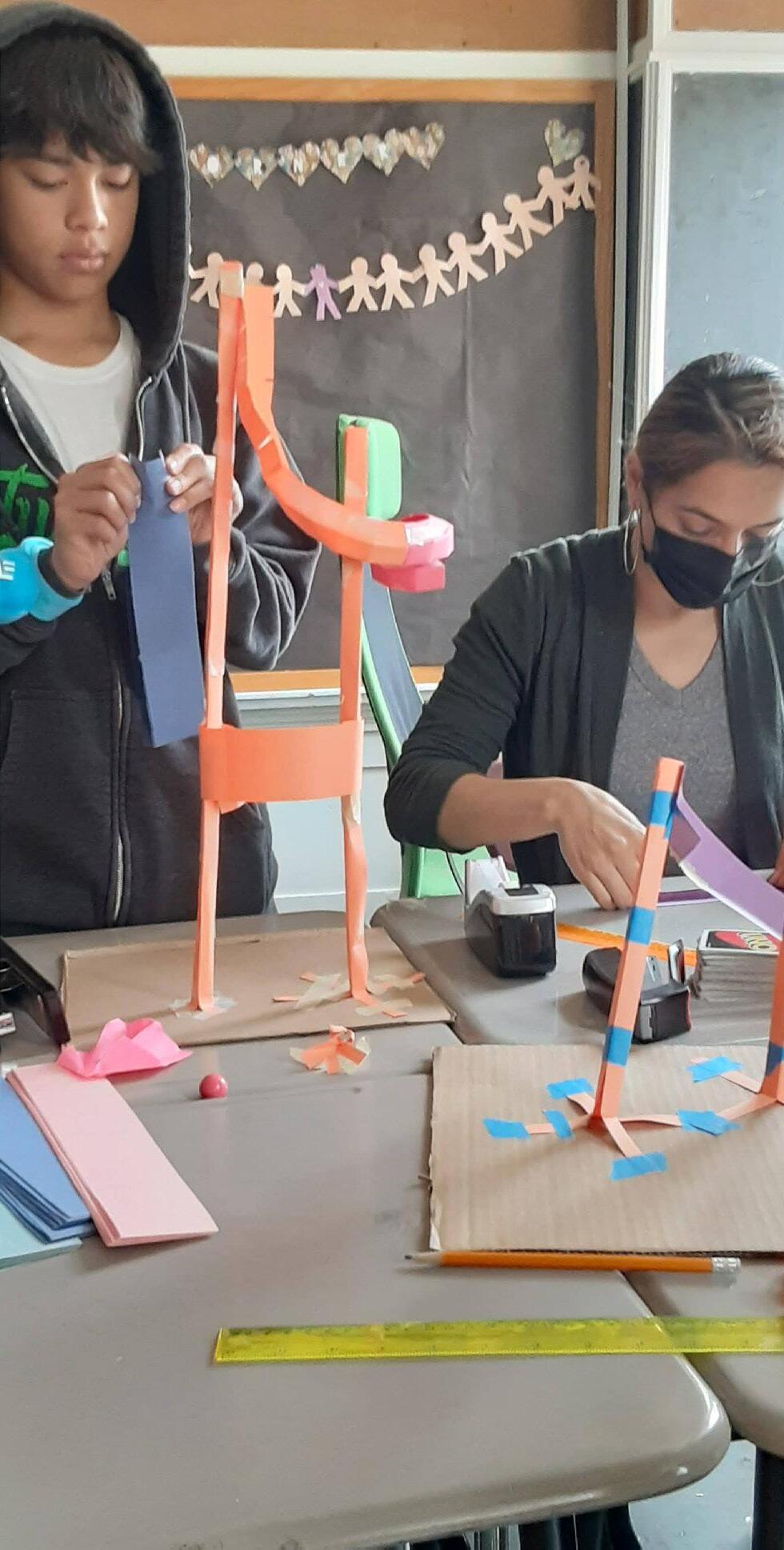
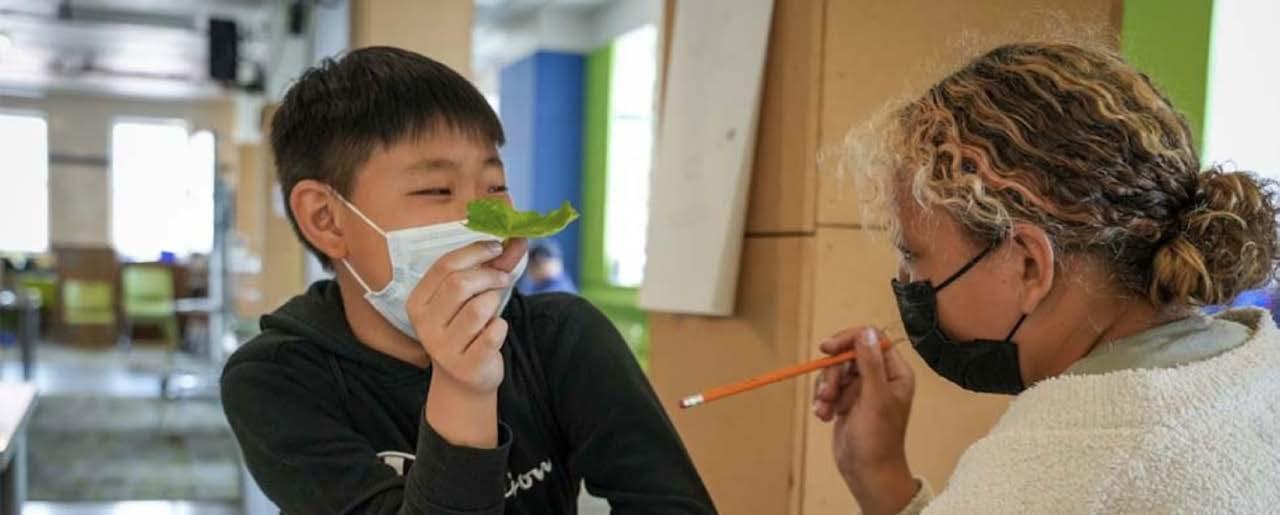
Chapter ONE:
AN INVITATION
What this guide is- and why it matters
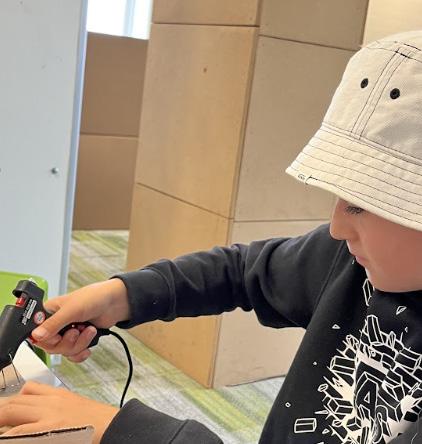
“The most urgent social issue affecting poor people and people of color is economic access... [and that] depends crucially on math and science literacy.”
- Bob Moses, Radical Equations
Standard STEAM (Science, technology, engineering, arts, and mathematics) education is grounded in a white male-dominated culture where Black, Brown, Latinx, girls, and/or indigenous students will never fit into. It doesn’t work to expect diverse learners to simply “fit in” and mold to existing environments that weren’t designed for them — they need to feel seen, valued and cared for.
We Have Seen Trends Where
Shortages of youths from all demographic groups who are prepared in STEAM
Inequities in STEAM achievement and attainment remain consistent.
Students who are girls, Black, and Latinx are likely to experience doubts about their STEAM abilities due to the lack of diversity in these fields.
Stereotypes in STEAM are a barrier to diversity even though everybody can shine a light in STEAM.
Students and people, in general, don’t relate STEAM to everyday life. STEAM curriculums taught in schools don’t include ancient, indigenous, and community knowledge, or realworld STEAM problems.
Equit y and inclusion in STEAM education have, for the most part, escaped critical analysis. The current foundations of STEAM education reinforce anti-Black, settler-colonial, and neoliberal sociopolitical structures and ideologies in society.

PURPOSE
This Guide presents concrete recommendations for creating inclusive, equitable, and accessible STEAM spaces from the ground up. It aims to build a structure for the inclusion of people from communities often marginalized in STEAM, including those who identify as Black, Indigenous, people of color (BIPOC); LGBTQ+ people, Latinx, women, and neurodivergent people; first-generation people; linguistically diverse people.
We recognize that other communities are also marginalized in the STEAM community, and we recognize how these identities intersect. This Guide is intentionally not an exhaustive resource, and we’ve linked to related resources throughout instead of being duplicative.
WHO IS THIS GUIDE FOR?
K-12 educators, K-12 administrators, and educational communities.
We encourage and challenge you to implement as many of these recommendations as possible to build the capacity while continuing to learn from your students and other liberatory practitioners.
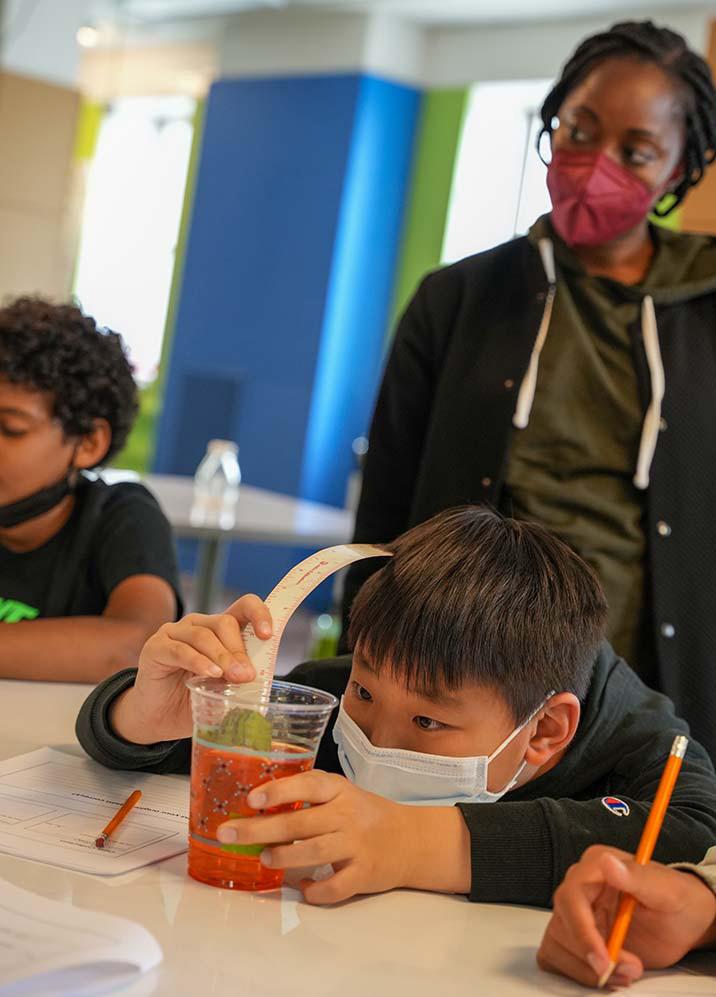
We will update these recommendations over time to incorporate educators’ feedback that focuses on belonging, equity and inclusion and share their successes and failures. Sharing our experiences will allow us to iterate on these guidelines as we identify areas for improvement. Please reach out to steamlearninginstitute@gmail.com with any comments, feedback, or questions.

LAND ACKNOWLEDGEMENT
Recognizing the land that you are on and learning more about the Indigenous people who are the original and current caretakers of the land disrupts and acknowledges the attempted erasure of Indigenous people and ways of life. Additional resources that may be useful include the Landback Manifesto and the Native Land Digital Map.
Burlingame, CA, where I created the guide, is located in the traditional homelands of the Muwekma, Ohlone, and Ramaytush nations. It was a site of trade, travel, gathering, and healing for many Native tribes. I would not have access to this land that has held, nurtured, and provided for me and mine if not for the stewardship of these and many other unrecorded, distinct Indigenous communities.
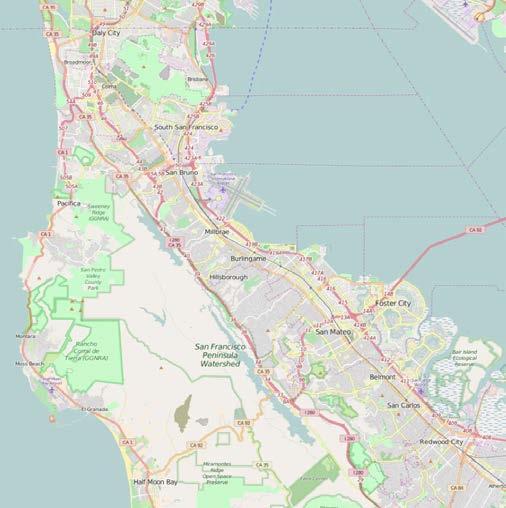

“I engage in this land acknowledgment both to acknowledge the land and the people who are its original and current caretakers. The land acknowledgment is a step toward truth that the land is unceded, meaning it was taken rather than given, and of the grave harms enacted on Native people by means of taking. This is a single step on the journey of repair, not its end. Repair includes selfeducating, learning about how you can support work of local Native people and initiatives in your community, and/or national campaigns like Landback by the NDN Collective that teach about and make progress towards the rematriation of everything that was taken, including: land, language, ceremony, food, education, housing, healthcare, governance, medicine and kinship.”
- Ashley Gallegos for Belonging: A Weekly Practice Space
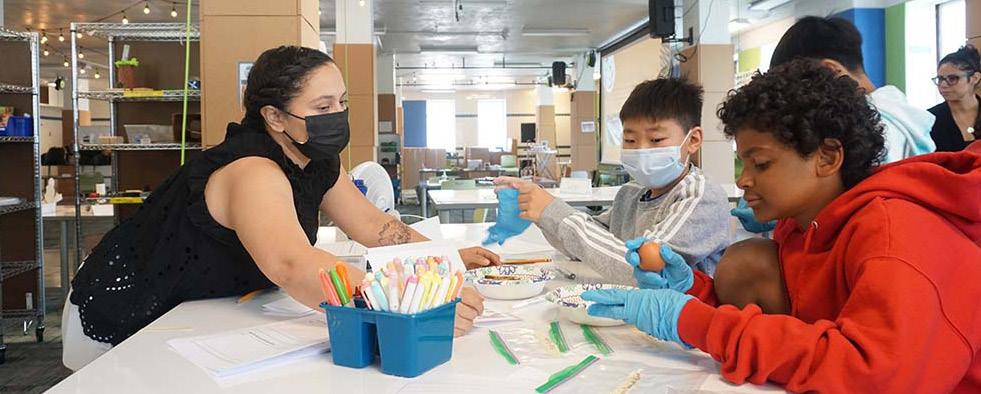
02 Chapter TWO: GENERAL PRINCIPLES
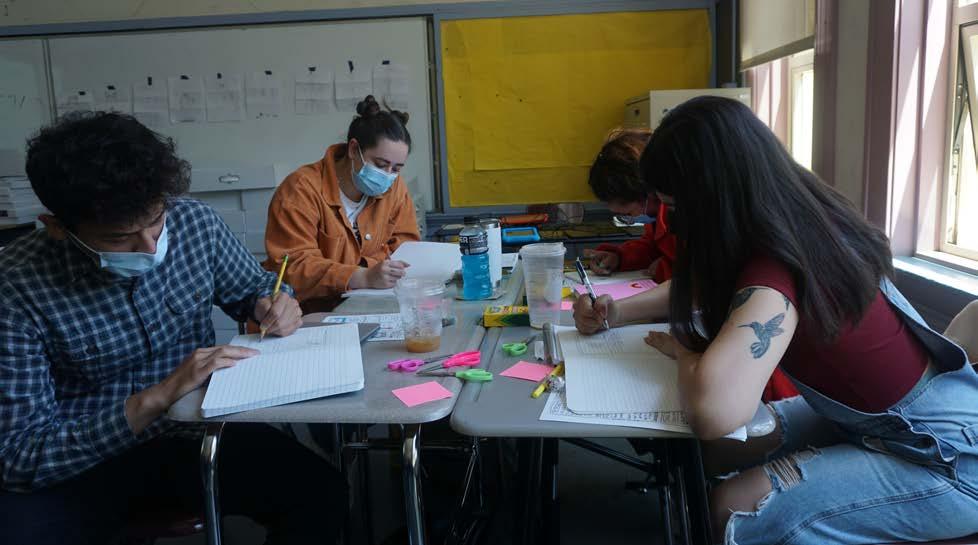
DEVELOP BELONGING
“Belonging means more than just being seen. Belonging entails having a meaningful voice and the opportunity to participate in the design of social and cultural structures. Belonging means having the right to contribute to, and make demands on, society and political institutions. Belonging is more than just feeling included. In a legitimate democracy, belonging means that your well-being is considered and your ability to design and give meaning to its structures and institutions is realized.”
- John A. Powell, Othering & Belonging Institute director
Read the quotes with your students. Invite your students to think/pair/ share on the bolded parts.
What does a meaningful voice mean to you? Can you share a friend/groupbased experience where you had a meaningful voice?
Share a time when you participated in creating a system or structure. What system or structure did you make? Did you like this process? Did it make you feel like you belong? How did your participation strengthen the outcome of the work?

“A “sense of belonging” refers to a student’s feelings of acceptance, importance, value, and comfort to be oneself in the classroom and the workplace. Research shows that Black and brown women in STEAM report feeling a sense of belonging less frequently than any other demographic group — less than white men, white women, and men of color — and that the extent to which this group struggles with belonging can be overlooked when race, gender and economic status are not considered together.”
-NikoleCollins-Puri
“If diversity is being invited to the party, and inclusion means being asked to dance, then belonging is being asked for input into the playlist for the dance music and feeling free to ask anyone you want to dance with you.”
-Michael SeitchikRead the article 4 min
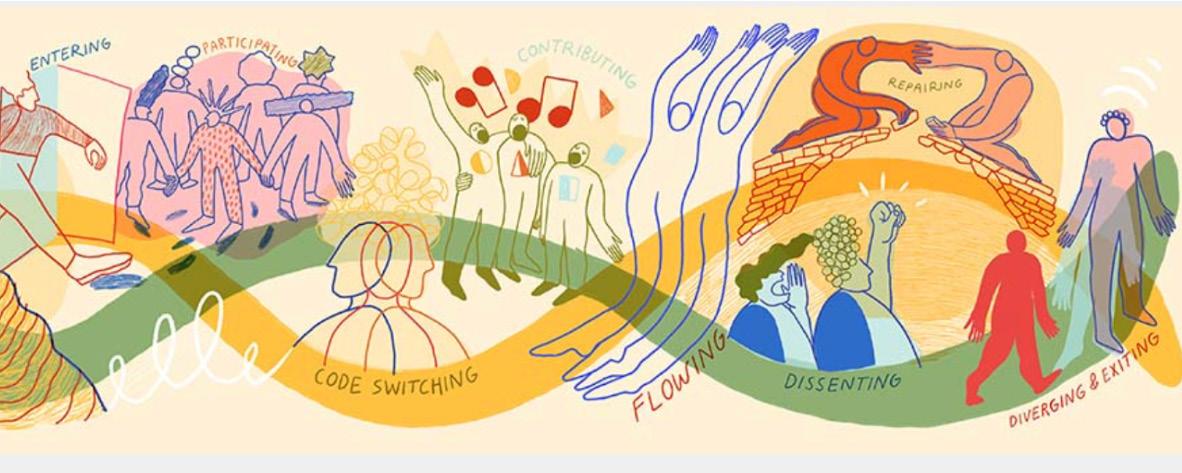
The above illustration walks us through Susie Wise’s nine parts of a journey towards more belonging.
DESIGN FOR BELONGING
In her book Design for Belonging, Susie Wise offers a framework for belonging that rests on nine parts of a journey-from the invitation to entering, participating, code-switching, contributing, flowing, dissenting, repairing, diverging & exiting.
(credit: Rose Jaffe)
The Invitation: Implicit or explicit, formal or informal, it cues you for what is possible. You may want to convey that you care for the people you invite. A personal invitation or a phone call to family to invite them to a student’s showcase can show the family how much you care.
Entering: A welcoming classroom can take many different designs. In a unit, the hook or a discussion about co-designing a unit can be used as a moment for entering.
Participating: The students’ voices matter, and you want to ensure they have agency and can authentically participate.

Code-Switching: Adolescents can quickly codeswitch, and allowing all the forms of code is inviting to all students.
Contributing: Contributing is also a circle—the more you belong, the more you can contribute; the more you contribute, the more you belong.
Flowing: Feeling the rhythm and the dance of the group or your role within it.
Dissenting: No community can thrive without understanding how to work with conflict and disagreement. You may want to discuss agreements and roles.
Repairing: Hurt happens; how you recover from it is a profound indicator of belonging. Restorative practices are great tools for repair.
Diverging and Exiting: How people feel when they leave and when they stay behind.
PRACTICE BELONGING
3 minBelonging
You can download the worksheet for your students.
Sentence Starters
My full name is It comes from (or means)
This exercise can be done to create a culture of belonging, trust, and authentic relationships. It was developed by David H. Clifford (Specialist, Design, Build + Innovate Lab (DBiLab).
My family is from____________________________________ I identify as I see myself as (character, future something, etc.)
When I walk down the street, I think people see
I feel most myself when____________because____________
A place I feel I belong is______________because___________
I feel this (when and how often?)........
A time I felt excluded at Redwood Day was___________ (where and when)____________
I felt this way because___________________________________ I went to _____________to support me through this feeling because they ________________________.
My community is made up of ____________ (who, what, where)____________
I wish the DBi Lab community had a bit more of ________ (these parts)_____ of my community so that_____________

Authentic User Capture
A person’s Story, including self-identification, perception of self, others and values.
A person’s sense of belonging.
A person’s sense of alienation.
A person’s sense of community.
Belonging Map
You can download the worksheet for your students.



This exercise can be used to chart the students’ positive and negative feelings over time. Students could track their feelings about a place where they are right now at the school or outside the school.
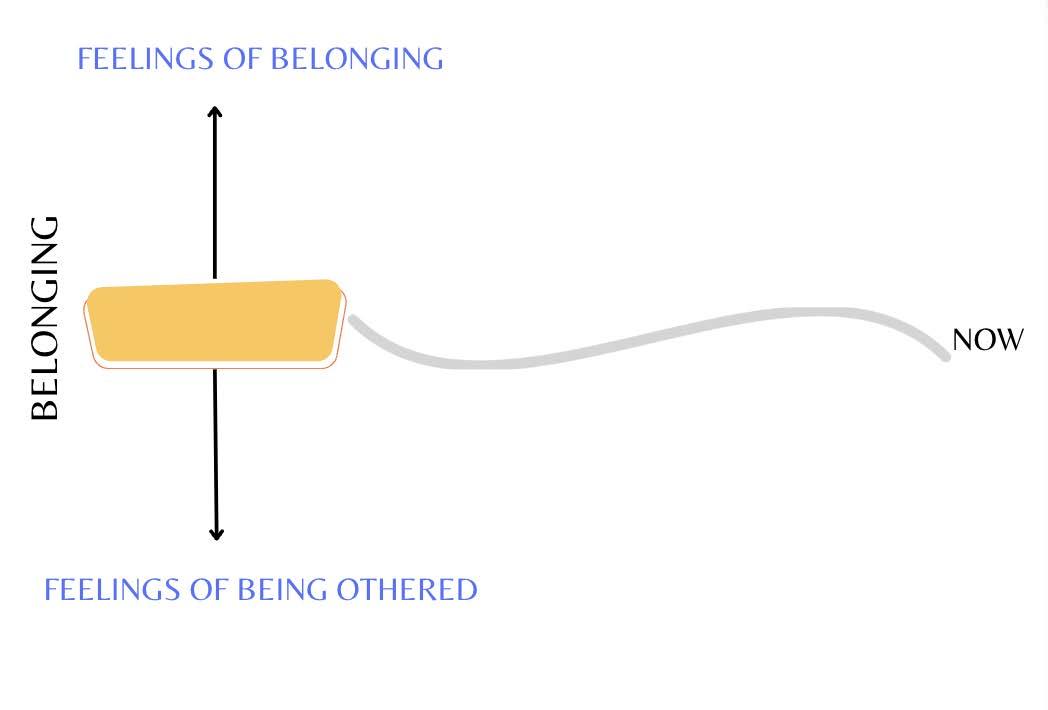
• Think of a place in your city, town, school or community where you feel and see belonging for yourself?
• Draw a line to represent the emotional ups and downs
• Make some notes
• Reflect: For the highs, what supported these feelings?
• For the downs, did you experience exclusion or othering?
The y-axis expresses positive and negative feelings of belonging. The x-axis represents time; it could be a place at the school or outside the school where you mark some highs or and low feelings. Notice patterns as feelings may fluctuate.
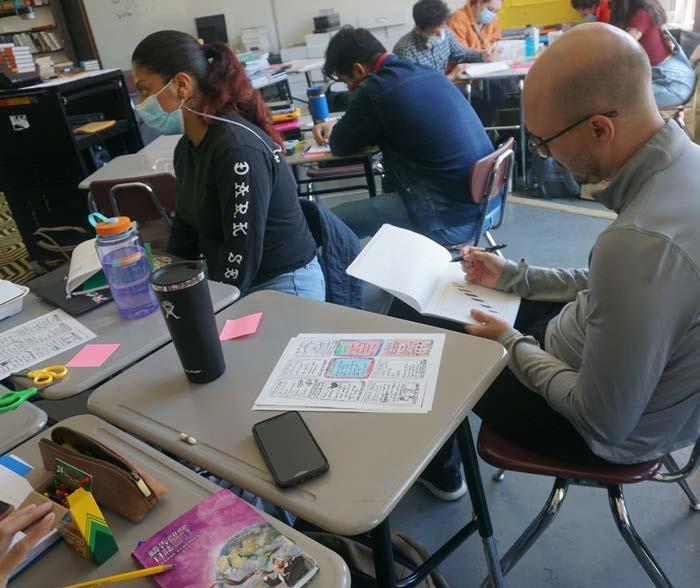

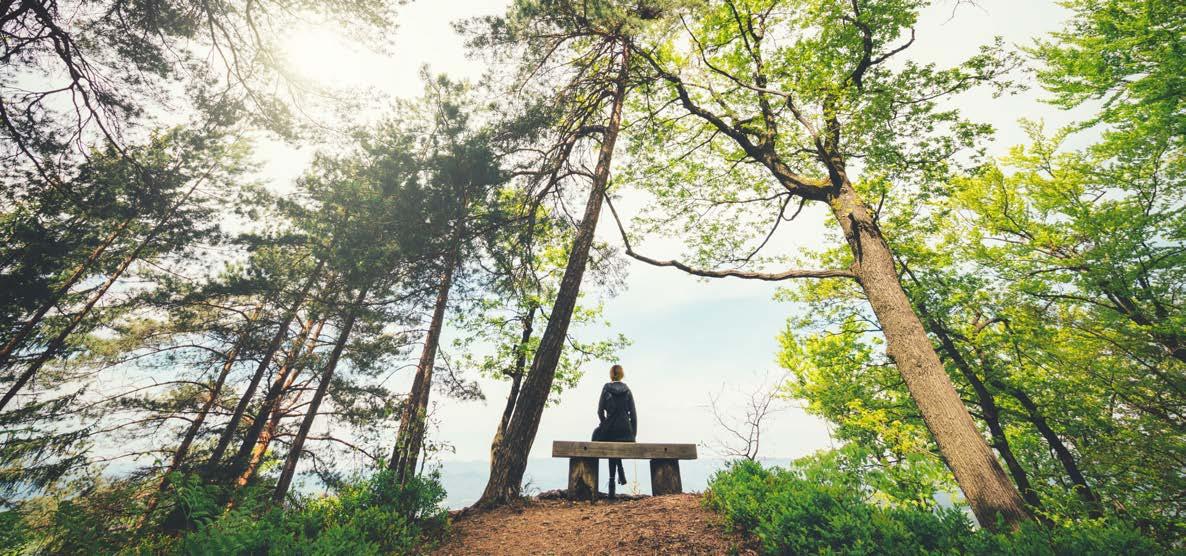
PRACTICE MINDFULNESS
Mindfulness is a form of mind-body healing that has been practiced for thousands of years in spiritual, religious, and secular spaces around the world. Mindfulness can be used to ground deeply in purpose, community, self-care, and healing.
When we practice settling and focusing our minds, we release stress and access the power of our individual and collective imaginations. Mindfulness practices includes a focus on the breath and the body, as well as a few moments of silence. One facilitator--the teacher or a student who has volunteered can guide the mindfulness activity by adding a quote from an author, activist, artist, singer, community leader, scientist, or mathematician that connects with the class theme or to a different topic.
“Part of the healing comes from sharing our stories when we feel we have the capacity to share.”
-Dr. Salina Gray, (W)holistic science educator.

PRACTICE MEDITATION
Below is a simple meditation exercise 10 min
I invite you to sit up just a little bit taller. Please join me in taking a deep breath in... and then out.
Gently close or lower your eyes. For a few minutes, put all your focus and attention on your breath.
Notice the way your breath moves your body in subtle ways.
You can take a minute to make a “weather report.” Tell yourself how things are inside you right now: thoughts, your body, your feelings, and your mood. Only observe; do not change anything.
Allow the breath to move into spaces where your body may need to relax - the space between your eyebrows, your jaw, your shoulders, your belly, and anywhere that needs a breath.
Now that your focus has moved to your body, take a moment to notice where your joy is living in your body. It may take longer for some of you to find that space of joy in your body, so take a few more moments to find it. It may be subtle, but trust that it is there. It is ok if you can’t find it. In that case, you may imagine a time when you felt joyful.
Now let that joy expand slowly and intentionally throughout your body.
Here’s a quote by Maya Angelou to contemplate,
“We need joy as we need air. We need love as we need water. We need each other as we need the earth to share.”
Now take a deep breath in... and let it out. And gently open your eyes.
Resources
• The Mindfulness Journal for Teens
• Mindful Games Activity cards
• I Will Be a Hummingbird
• (W)holistic Science Pedagogy

DEVELOPE A CULTURE OF CARE
Cultures of Care are practices that create more belonging. Western cultures often think of themselves first as individuals, but the human being and our students in the classroom may be better understood as a focal point of embedded relationships as we exist in community- in schools, in families, in churches/mosques/ synagogues/ temples; in ecologies such as parks, gardens, hallways, classrooms, maker spaces….
Nothing is separate. Our experiences, our relationships, our minds, and our bodies are all connected.
Questions To Reckon With:
How do I demonstrate care for all families, colleagues, and students--particularly individuals who have contextual experiences that are different from my own?
Resources
Making Caring Common
How Teachers Can Make Caring More Common
Why Culture of Care
Caring Communities: Linking school culture and student development
Ecosystems of Care: Mental Health & Wellbeing in Schools
How am I disrupting identity threats or stereotypes and creating conditions where students feel valued?
What safety nets are established for students in need of academic or socialemotional support? Are the strategies meeting the individualized needs of learners, or do they serve as a checkbox?
How does curriculum honor the identities, histories, culture, and experiences of all learners?
What opportunities are offered for students to learn about each other and process the world around them for growth and child development?
How am I teaching STEAM in a way that doesn’t harm or create more harm?

DEVELOP A CULTURE OF HEALING
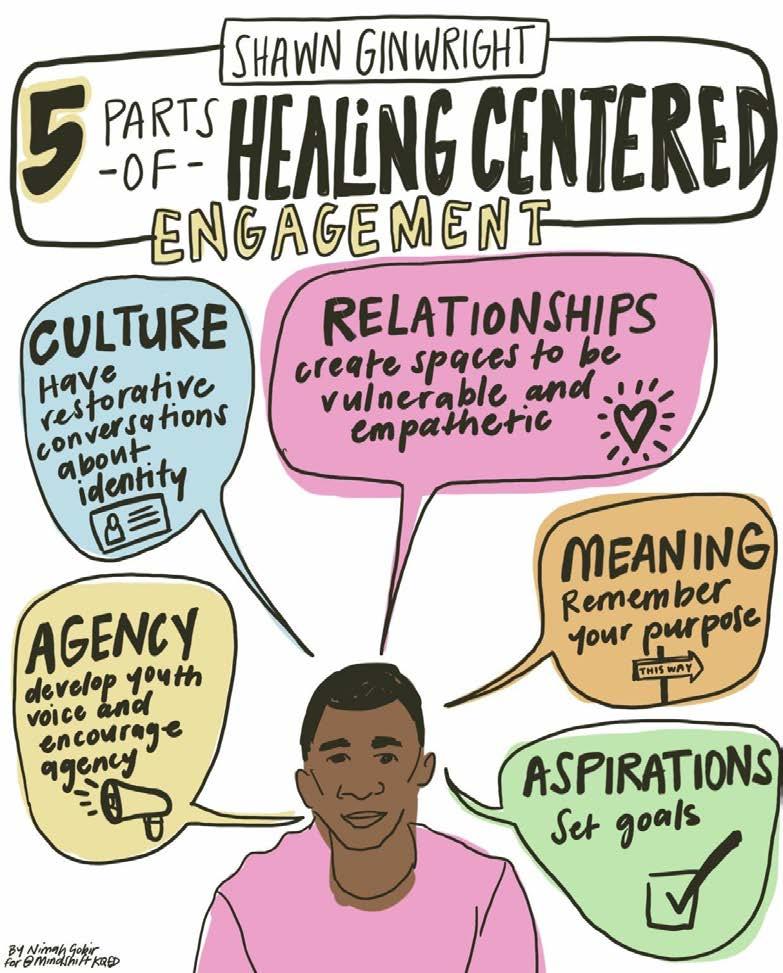
Dr. Shawn Ginwright, a professor at San Francisco State University, developed a strength-based social-emotional learning strategy for educators and caregivers based on trauma-informed care and focused on development across five key principles: culture, agency, relationships, meaning, and aspirations.The image is a cartoon of Dr. Shawn Ginwright with five bubbles of different colors with the five principles. From 5 Strategies for developing a school-wide culture of healing

“A healing-centered approach to addressing trauma requires a different question that moves beyond ‘what happened to you’ to ‘what’s right with you’ and views those exposed to trauma as agents in the creation of their own well-being rather than victims of traumatic events. Healing-centered engagement is akin to the South African term “Ubuntu” meaning that humanness is found through our interdependence, collective engagement, and service to others. “
-Dr. Shawn Ginwright
CULTURE
Healing-centered engagement focuses on culture and identity as pathways to healing. “We need to engage in restorative conversations about various types of identities that young people bring into our community programs or schools”
RELATIONSHIP
“Transformative relationships require adults to learn how to be more vulnerable with each other and in turn cultivate a safe environment for students. Transformative relationships, are built on pieces of our humanity. “And when we let our humanity spill out on each other, we create a bond that matters.”
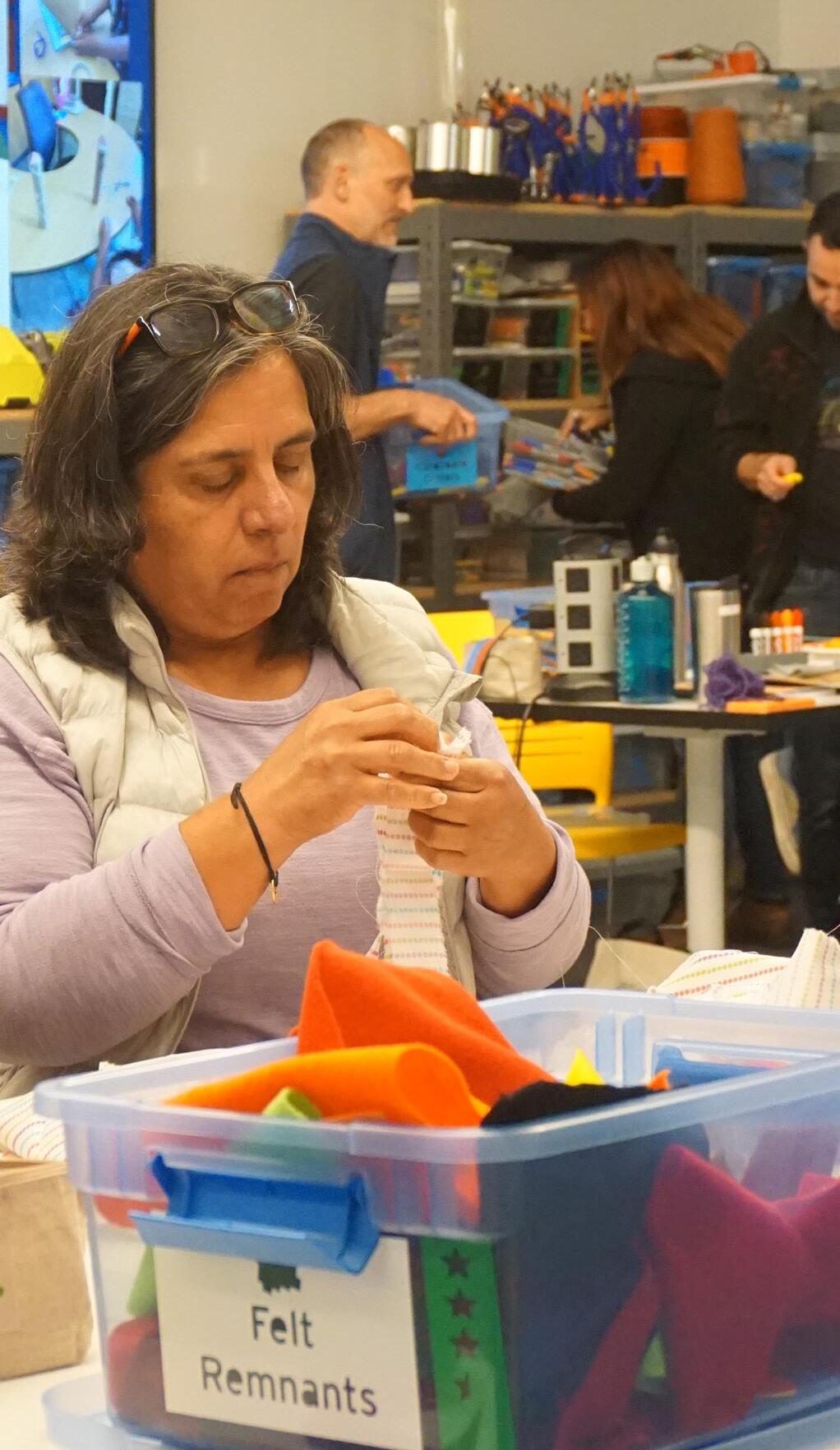

ASPIRATION
“We know that schools are way more than knowledge exchange and acquisition. Schools are social emotional spaces. So when we address the trauma and we create healing environments, then it means we get to the deep learning that young people so need and want.”
AGENCY
“When we engage in action or some form of improving a problem, we find that action in and of itself facilitates a sense of wellbeing.” Whether it’s making meaningful changes in their neighborhood or school, agency cultivates a sense of purpose and collective engagement. “We can act and respond in productive and collective ways to improve the environment where we live, work, and play.”
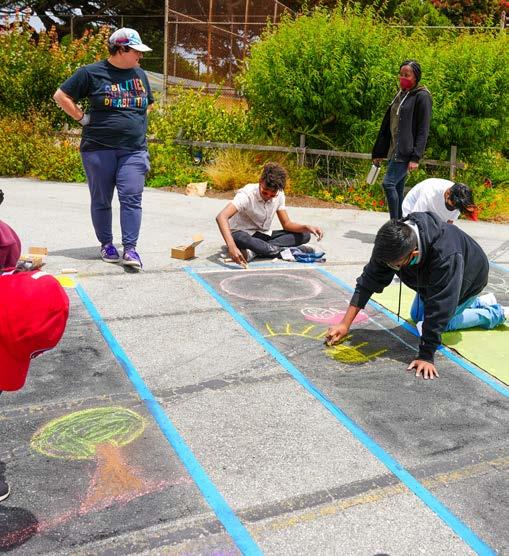
MEANING
“We have to remind ourselves of the purpose that we’re engaged in when we are working with young people. We also have to remind young people of the broader, bigger, deeper purpose of their engagement.”
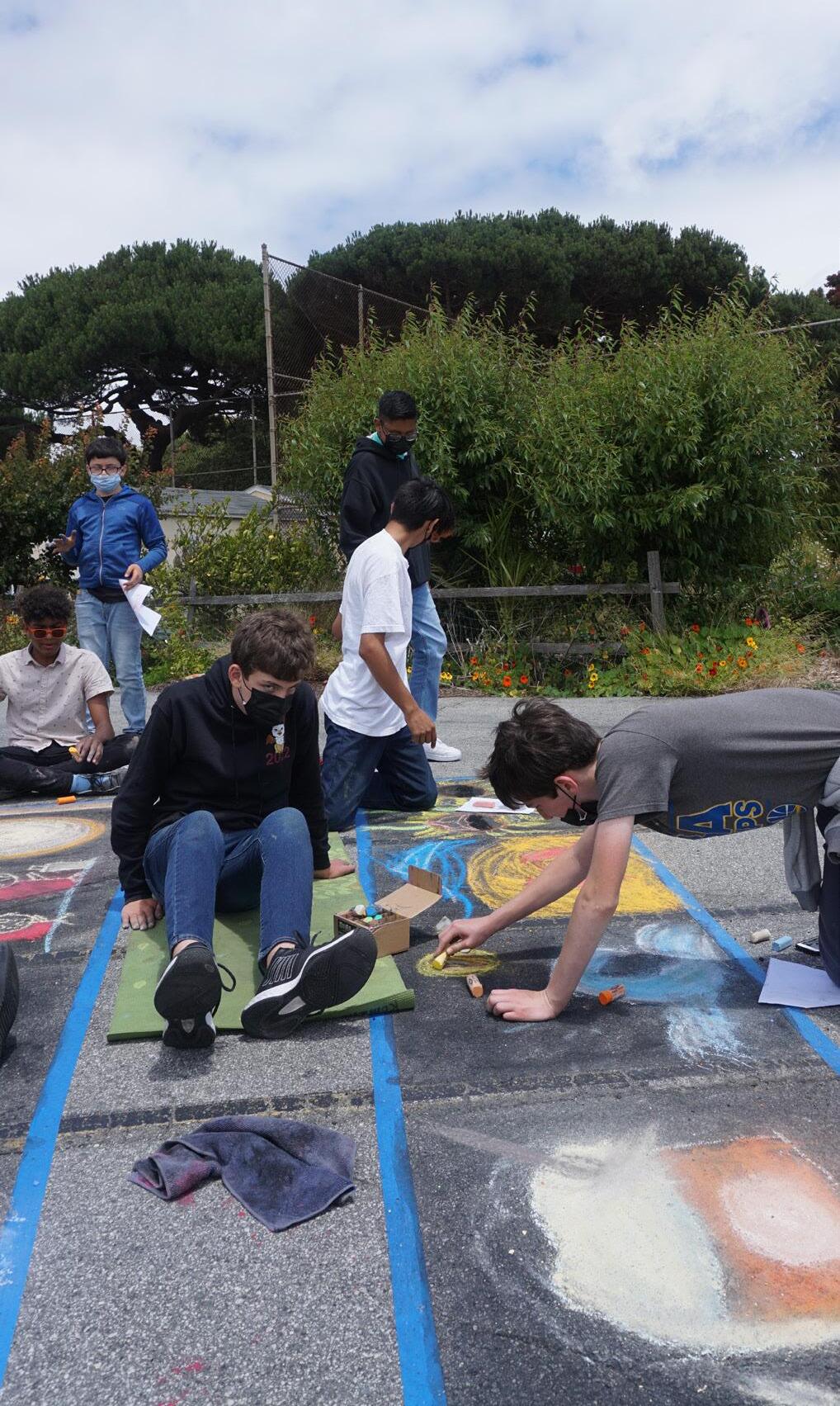

PRACTICE CULTURALLYRESPONSIVE STEAM
No education system is culturally neutral. Culture is how one makes meaning of the world. Education systems are developed to reflect the values and beliefs of the people who create them. In Western countries such as North America, the education system evolved from the post-industrial and colonial British education model.
Despite the changes over the past decades, the system still reflects the values and priorities of the people who created it. For example, when your students build a system such as a solar oven in Engineering Design, consider shifting the design challenge from ‘constraints and productivity’ to ‘safety and sustainability.’ A design that recognizes the community’s priorities expresses different cultural values from one that prioritizes efficiency and productivity.
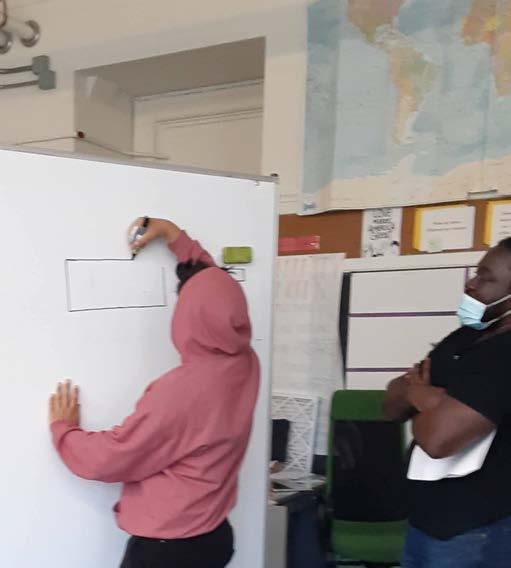

From First Nations in British Columbia, Math First People
Culturally Inclusive Mathematics and Indigenous Knowledge
Teacher Resource Guide
To improve the academic success of students within mathematics, researchers and educators have identified the need for the following:
Creating equitable conditions in mathematics education connecting school mathematics to the experiences of culturally diverse students.
Developing mathematics curriculum that is culturally relevant, temporally relevant (i.e., applicable to students’ present-day experiences), and academically rigorous
Inspiring students to appreciate the mathematical accomplishments of their rich cultural pasts, while simultaneously preparing them to meet the mathematical challenges of the present and future.
Key Principles
Help students recognize and honor their cultural beliefs and practices, and acquire access to STEAM and evolving contemporary practices.
Become knowledgeable of the contributions of different ethnic groups in the development of STEAM. Use student bilingualism as a resource in the classroom. Many scientific words have Latin roots, which are shared across languages.
Ground STEAM instruction in students’ daily lives, and by doing so, STEAM becomes contextualized/situated.
Build a community of learners and collaborators similar to what we experience in STEAM professions. Provide a STEAM library for research and engaging students in ways that reflect STEAM habits of mind, such as experiential learning, inquiry-based, problem-based, and creativity
Develop STEAM content in tandem with students’ interests and learning needs
Foster conversations that allow students to use their culturally-specific language, and honor different forms of input and output to prompt thinking, learning, and conversations.
Allow space for STEAM learning and productive struggle. STEAM is about investigating and inquiring. It takes multiple trials and errors to solve mathematical problems, develop the best conditions for a scientific investigation, or build a prototype for engineering designs.
Include Critical Reflection questions when discussing harm done in communities to avoid having deficit narratives.
Students choose topics for inquiry that are interesting to them, and they use mathematical analyses to effect changes in their communities, such as by relocating local liquor stores that are close to their schools.
Students use mathematical analyses to examine societal inequalities, such as racial profiling during traffic stops.
Students integrate social justice and economic justice issues into the mathematics curriculum using examples by Jonathan Osler.
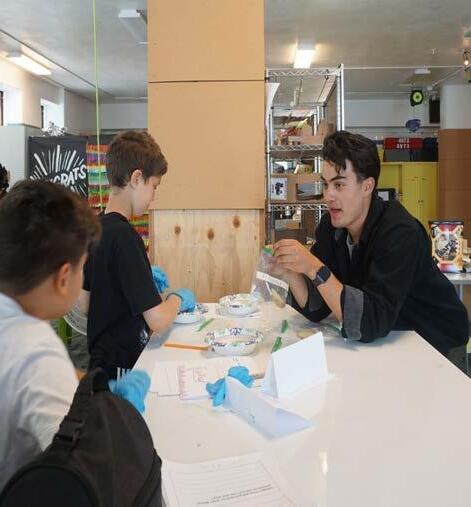

STEAM-Science STEAM-Engineering
Students analyze how systemic racism affects communities by studying biodiversity in different neighborhoods: By comparing wildlife populations (mammals, amphibians, reptiles, and birds), students can examine which wildlife populations live in areas with higher proportions of white residents versus in redlined neighborhoods.
Students use hip-hop: HipHopEd displays the interests of science enthusiasts passionate about hip-hop and introduces hip-hop and science.
Students trace back the origins of their food, investigating food production issues and sustainable vs. unsustainable farming to discuss global inequitable food distribution, challenging the idea of “food shortage.”
Students make connections between practices outside of school—such as organized labor, time, and food for a family-run food stand—and engineering design practices, such as maximizing the efficiency of food freshness.
Students investigate different designs of solar cookers as a way to use sustainable resources and to improve the life of users’ needs.
Students use the Liberatory Design modes and mindsets to address an issue in their community that matters to them, such as diabetes, stress, cancer, air quality, water quality, urban canopy etc...
The more students learn to see STEAM around them from different perspectives, the more they can investigate and develop an inquiry-based mindset and a STEAM identity.
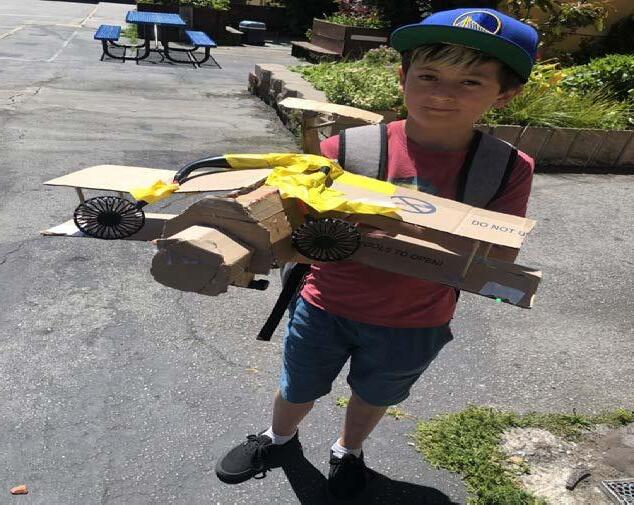

STEAM-Art
Students can create a botanical journal from repurposed paper, bind it using twine, and record and draw the plants around their community.
Students develop ways of communicating STEAM to others in more youth-friendly ways, such as creating a play, a dance, a comic, or a showcased climate-inspired artwork. How canstudents engage about science topics that matter to them through art?
Students learn the tradition of basket making or any artistic art from their cultural background.
STEAM-Technology
Is integrated with science, engineering, art, and mathematics.
The erasure and omission of STEAM history, theories, contributions, and ways of being and knowing of non-Western traditions is a form of propaganda for perpetuating a dominant, white-centric, imperialistic, and capitalist system worldwide.

Resources for CulturallyResponsive STEAM
Braiding Sweetgrass for Young Adults
Science in the City
STEM/STEAM, MAKE Dream
Black Panther Movie
Rethinking Mathematics. Teaching
Social Justice By the Numbers
Books from Octavia Butler
Potlach as Pedagogy: Learning Through Ceremony
California Academy of Science Bechtel Family Center/Monterey
“Critical pedagogy illuminates how classroom learning embodies selective values, is entangled with relations of power, entails judgments about what knowledge counts, legitimates specific social relations, defines agency in particular ways, and always presupposes a particular notion of the future.”
-Henry A. Giroux, On Critical Pedagogy
Introduce Community and Antiracist Practices
Understand how STEAM has been used to create and maintain racial, gender, class, and other inequity, as well as stereotypes and hierarchies. Here are some practices to disrupt that:
Interact with elders and knowledge keepers as well as indigenous communities. Communities have lots of knowledge built up over time that is related to science and can matter in science (e.g., agricultural practices, food preservation, cooking, herbal remedies, and land stewardship).
Connect to the land and nurture selfIdentities.
Integrate multiple perspectives (different ways of knowing), critiques, and counterstories that require attention to particular cultural contexts.
Use anti-racist education across the curriculum using Liberatory Design: Mindsets and Modes to Design for Equity and Liberate! Pocket-sized Paradigms for Liberatory Learning
Build relationships in learning.
Understand that people’s way of thinking, behaving, and being are deeply influenced by such factors as ethnicity, social class, and language.
Create autonomous learning environments for all students with enough space for students to engage in productive struggle, which is how the brain creates new connections (cognitions) for learning and growth (neuroplasticity).

• Celebrate students’ work with the community, such as community showcases, STEAM professional jury, and school exhibits.
• Collaborate with local non-profits, museums, libraries, and community gardens.
• Organize field trips in the community: beach cleaning, recycling facilities, wastewater facilities, restorative projects, native gardens, and farmers’ markets.
• Slow down by integrating meditation, movements, and artistic activities to help the embodiment of new knowledge. The dialogic response to the content being taught and that surrounds the learner exists in the potentiality.
• Teach STEAM in a way that allows students to use their understanding/knowledge to potentially change and transform the world around them.
• Create surveys around public health concerns within the community.
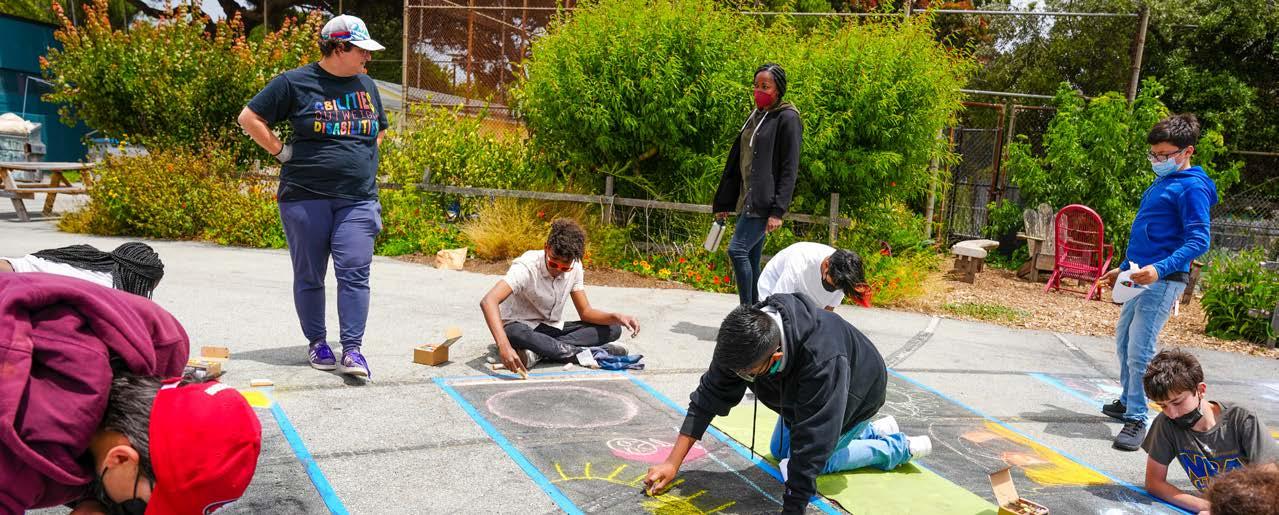
03 Chapter THREE: Liberatory STEAM Case Studies
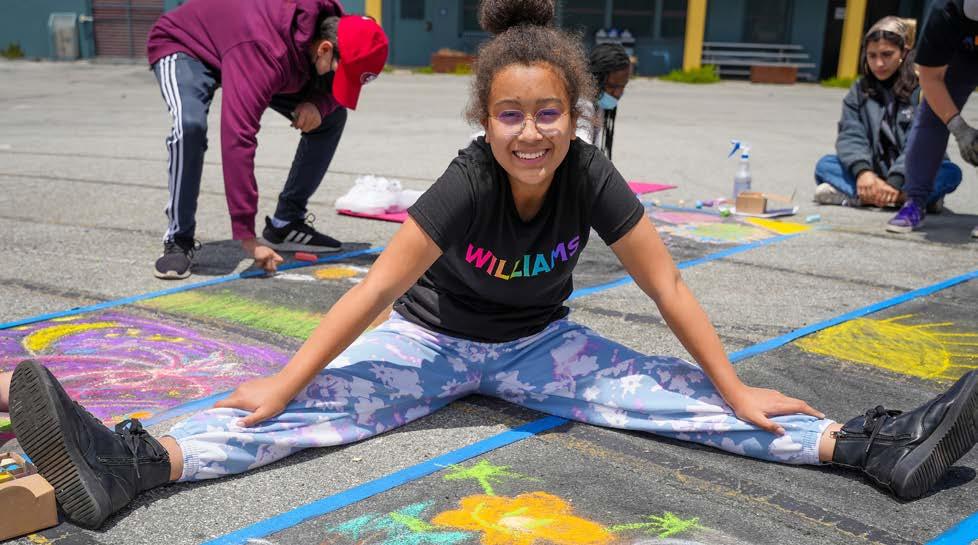
How A Makerspace Can Foster Community, Inclusion
& Belonging
The design of the makerspace at the Summer Academy Program (SAP), a partnership with Gateway Schools and the University of San Francisco, has been animated by the goal to empower students, provide choices, and inspire students in building and designing through access to creative materials and resources and the implementation of strategies that increase student sense of belonging. The inclusive space was inviting to all groups members of the middle schools from incoming 6th to 9th graders.
Makerspace is designed to foster curiosity and to support students to extend themselves through inquiry and personal interests while cooperating with peers. One student from the SAP shared: “First it was hard, but now that I do it regularly it made me learn more.” Another student said: “I found it to be the best part of the week because I was so excited to make stuff and create stuff from raw materials!” The majority of students expressed having a blast. Only 2 students out of 16 shared that they didn’t like it or they didn’t learn as much as they would like.
learning skills
Creative Confidence
Collaboration/communication
Design thinking
Belonging
Self-confidence
Self-assessment
Personalized Learning
Intrinsic motivation
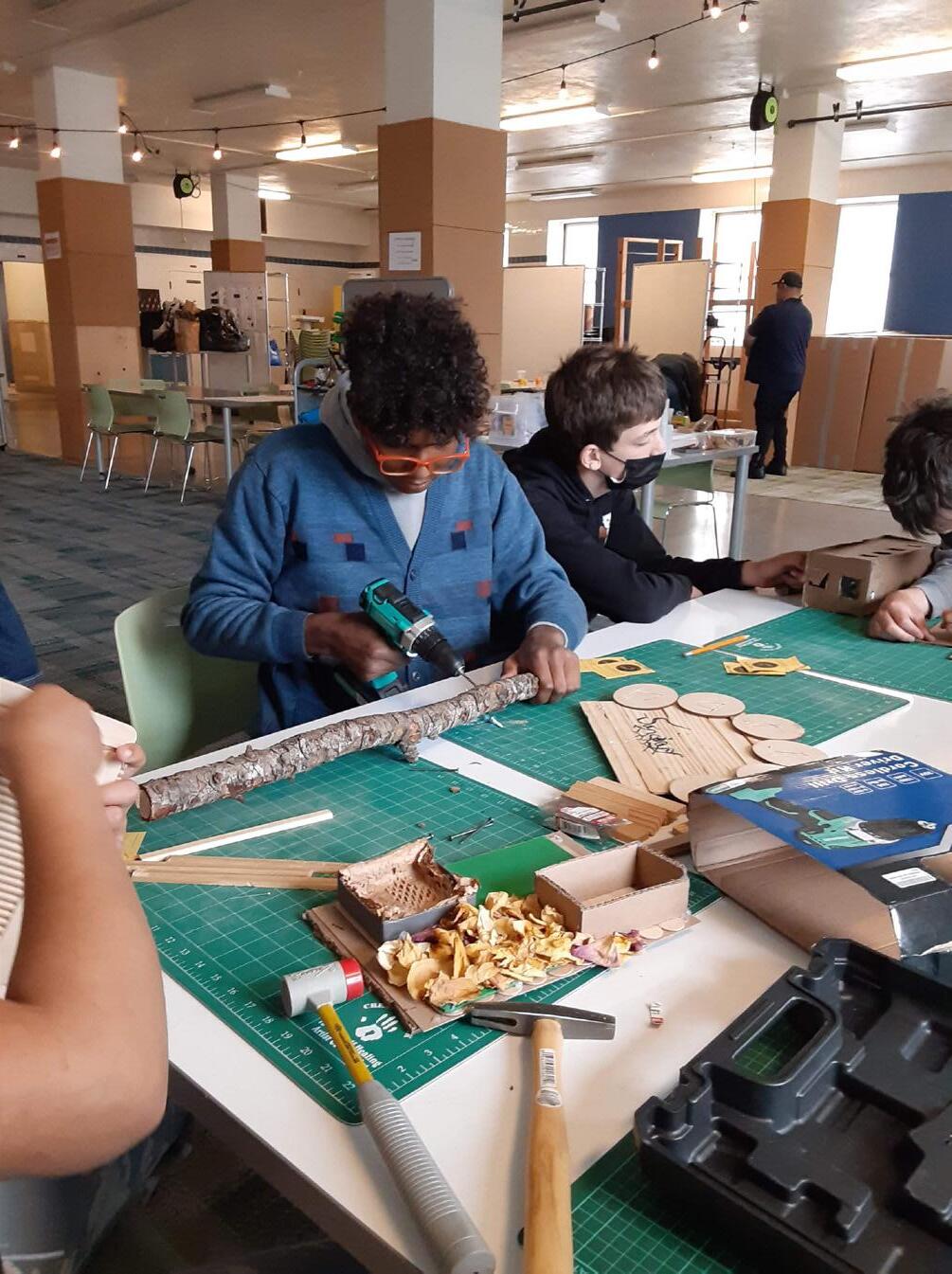

Street Art Provides Students with a Safe Way to Help Express and Explore Their Identity
Students are happy when they are allowed the freedom to create street art. Since its emergence in urban areas, street art has played an important role in the cultural space of most communities, public discourses, and galleries. It has been widely accepted by pop culture, and it’s an important part of contemporary art around the world.
In the past few years, there has been a growing interest in this remarkable form of art which has colored major cities.
We embraced street art at the Summer Academy Program at Gateway schools. It was taught by a science teacher artist, Drake Pillsbury. Students felt a sense of freedom in creativity. Joy and exuberance abounded!
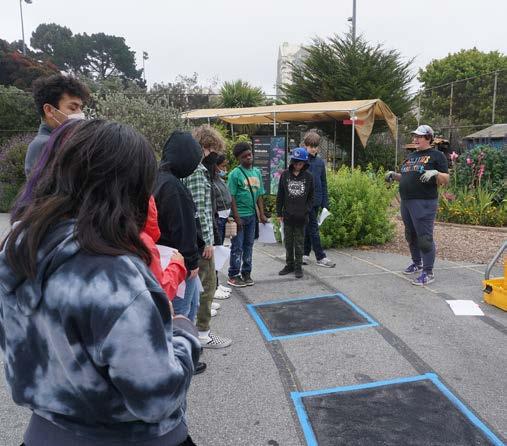
Liberatory art
Enhance intercultural communication
Bring color and happiness
Create unity as students
Collaboration on the art
Storytelling learning skills
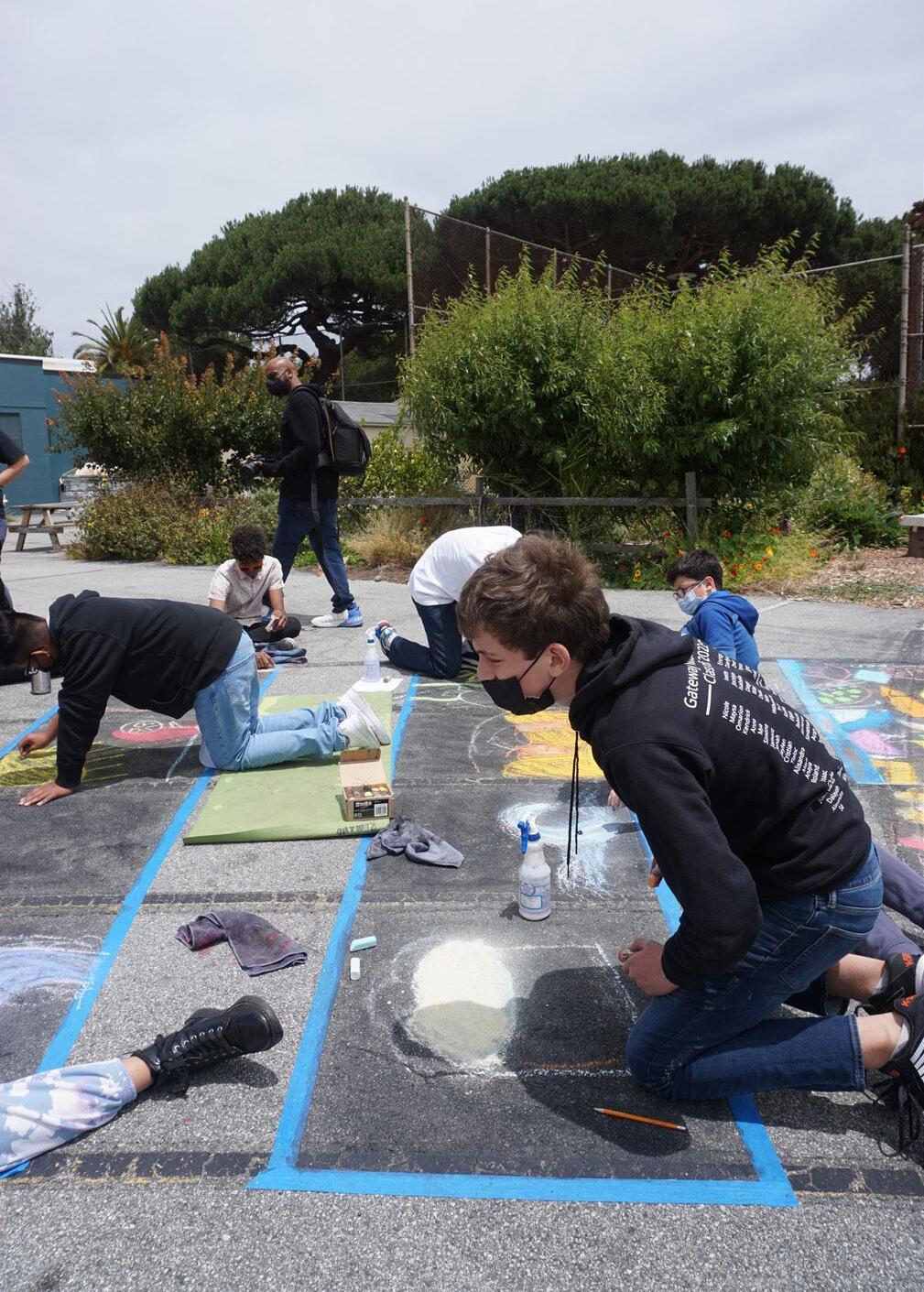

Centering Joy
Joy is an affirmation of life and a marker of our humanity; denying it dehumanizes us. People facing oppression have used music, dance, humor, art, and food for centuries to experience joy amidst the most grueling circumstances. In Brazil, the slaves gathered in open areas in the forest to perform a dance/fight, which was named capoeira, as a means of survival and cultural expression.
Bernice Ramos is a math teacher and she taught at College Preparatory in Los Angeles. In this Podcast episode, she shares how she integrated Joy into her Math teaching.
Listen to the podcast

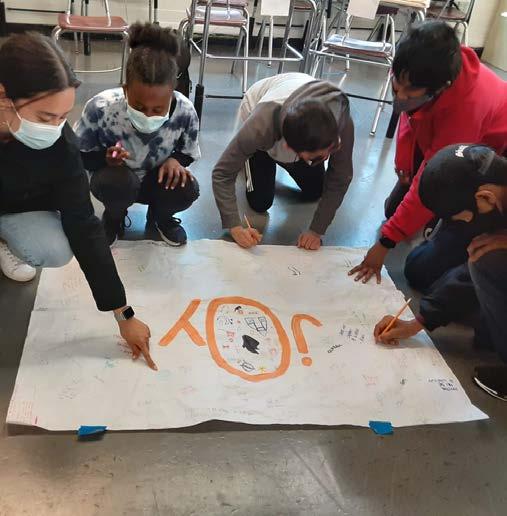
reflections
How does joy show up at the school, and in your classroom?
How do your students experience joy outside of school?
How can I joyfully engage the learning space?
How can I make the productive struggle joyful?
While we all have days where it is difficult to find joy within ourselves, we can always create a joyful and welcoming space for everyone. Joy is a celebration of life, and no one can take this gift away. Let’s “capoeira” STEAM learning in our classrooms.

Fostering Community, Inclusion, and Belonging Through the Liberatory Design
Identify your equity commitment
The Liberatory Design knits together humancentered design thinking with an equity lens and a complexity stance. For complex challenges like developing an inclusive STEAM classroom, emergent solutions must be found through dynamic interactions between diverse students and networks. Students are co-designers of the project, which can be any STEAM unit or prototype, and are key participants in their learning. Students use the Liberatory Design and the mindsets they want to work on for their projects.
• See and understand the history and effects of racial oppression/injustice.
• Engage with one another to better understand these challenges.
• Act together by designing and trying potential changes/actions/alternatives.
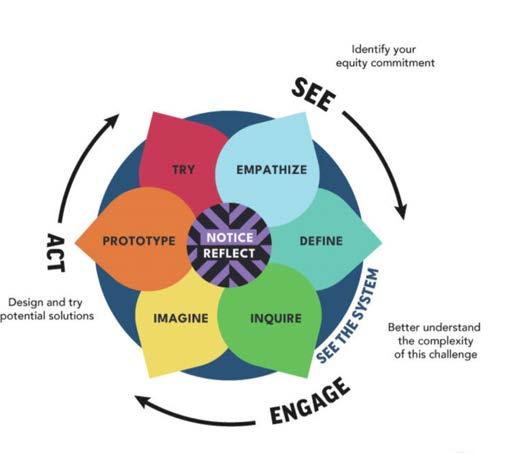
learning skills
Download the Liberatory Design cards here (pictured on the right)
Examples of Mindsets:
• Build relational trust
• Practice self-awareness
• Recognize oppression
• Embrace complexity
• Focus on human values
• Seek liberatory collaboration
• Attend to healing

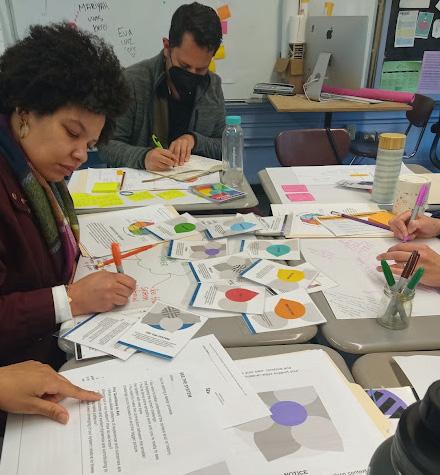
Top: Flower with six petals that represents the Liberatory Design framework.
Bottom: A group of educators using the Liberatory Design cards in order to create more belonging in their school.
Credits: The team who created the Liberatory Design. Anaissie, T., Cary, V., Clifford, D., Malarkey, T. & Wise, S. (2021). Liberatory Design.
Better understand the complexity of this challenge Design and try potential solutions Check Website
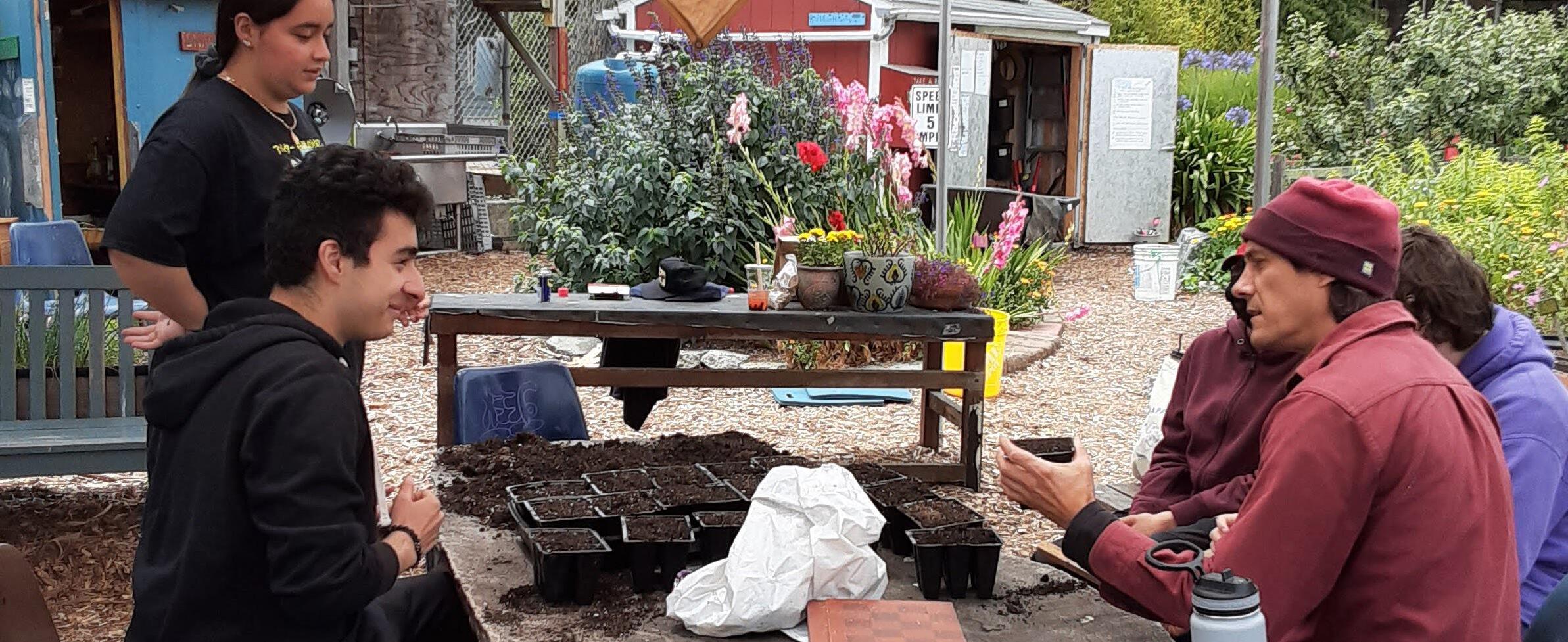
04 Chapter FOUR: ADDITIONAL RESOURCES
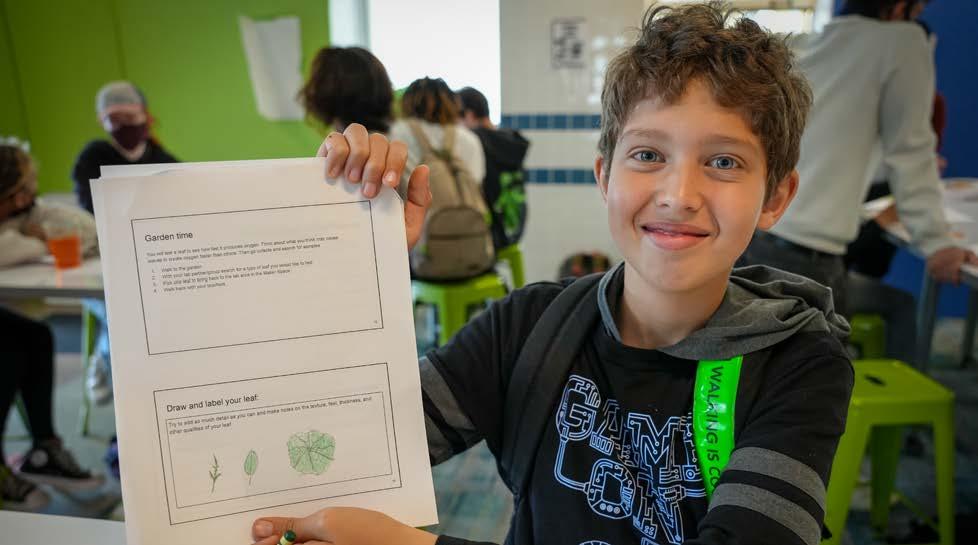
Additional Resources
The Importance of Representation in Science
Dr. Christopher Schell is a wildlife ecologist and assistant professor. He explores how structural racism, segregation, and poverty play a role in shaping the behavior of urban wildlife. Schell takes an interdisciplinary approach to better understand the future of ecosystems in cities — all while encouraging more scientists of color to join the field.
Read the article
Role of Language in Science Teaching
Dr. Bryan A. Brown is a professor of science education. He is the author of Science in The City where he argues that, given the realities of our multilingual and multicultural society, teachers must truly understand how issues of culture intersect with the fundamental principles of learning, and that the socio-linguistic understanding that students bring into the classroom is especially relevant to their progress in science.

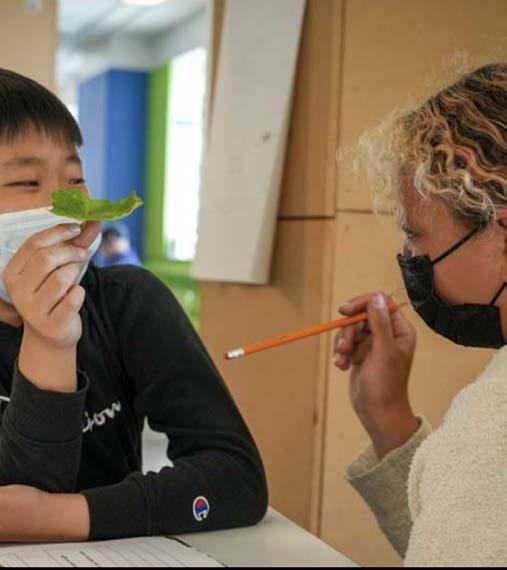

Cultivating Genius: An Equity Framework for Culturally and Historically Responsive Literacy
Dr. Gholdy Muhammad is an associate professor of language and literacy. She calls for a shift to honest, bold, and unapologetic pedagogy that is responsive to the social times. Her historically responsive literacy framework has five goalsIdentity, skills, intellect, criticality, and Joy (from her recent book Unearthing Joy).
Order the Book
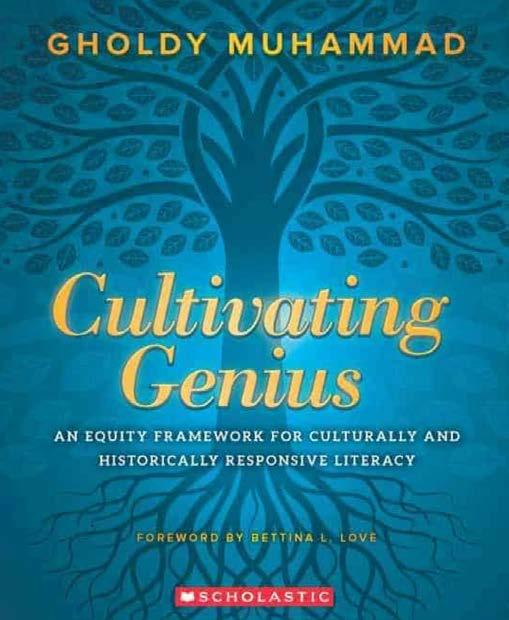
Food Sovereignty and Connection to the Land
Gather is a documentary by director Sanjay Rawal. It weaves intimate stories of the growing movement amongst Native Americans to reclaim their spiritual, political, and cultural identities through food sovereignty while battling the trauma of centuries of genocide. It has resources for educators.
Watch the Documentary
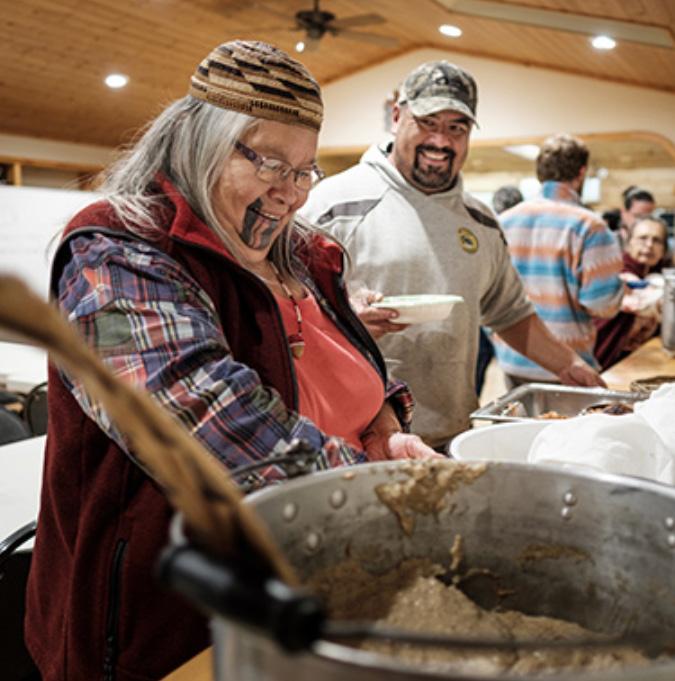

Do The Right Thing Pedagogy
Mario Benabe is an Ethno-mathematician, public intellectual, author, school leader, social justice activist and creator of Do-The-Right-ThingPedagogy, a framework for teaching and learning that decolonizes STEM education. Mario revived with his students an Incan mathematical tool called La Yupana.
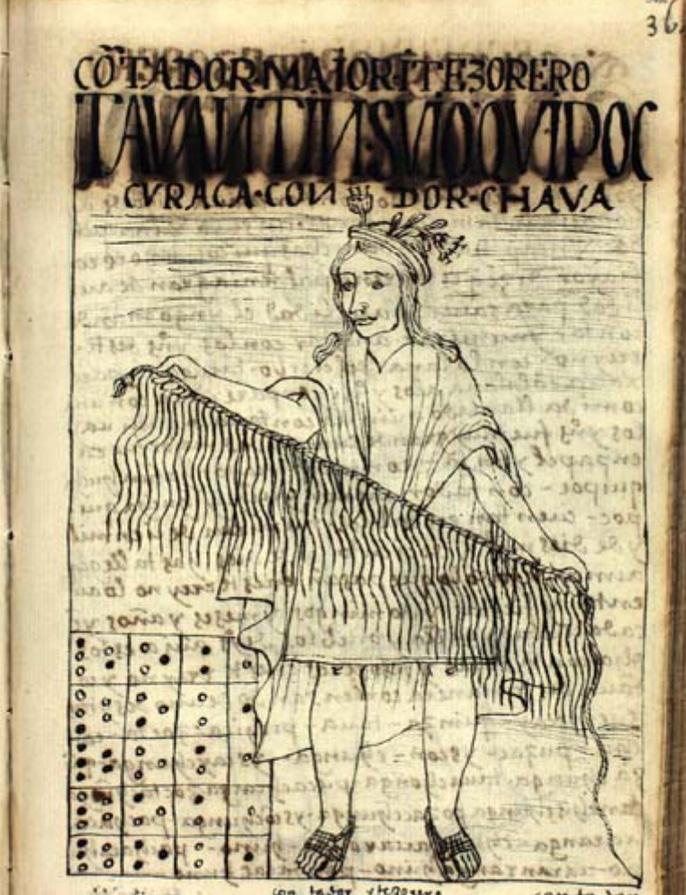
The Fathers of Mathematics-The Ancient History of Arabia - The Ascent of Civilization
This documentary shows how Arabs have been bringing knowledge of the ancient world to Europe since the 8th century. In the fields of medicine, mathematics and philosophy, their scholars were far beyond their time and still affect our world today.
Watch the documentary
Watch the video or visit Mario Benabe ‘s website. or Order the DVDs Series

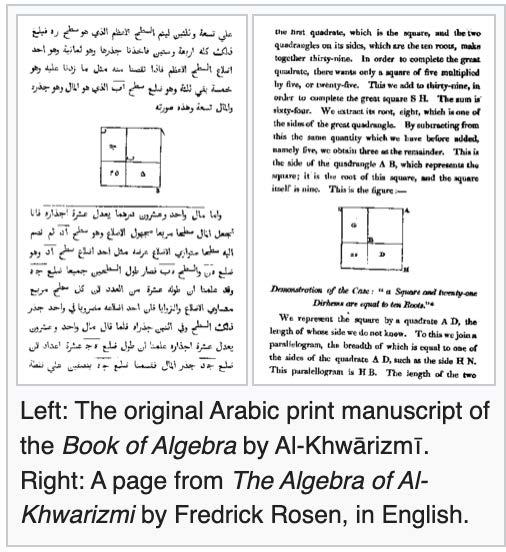
Culturally Responsive Teaching and the Brain
Zaretta Hammond defines Culturally Responsive Teaching as “an educator’s ability to recognize students’ cultural displays of learning and meaning making and respond positively and constructively with teaching moves that use cultural knowledge as a scaffold to connect what the students know to new concepts and content in order to promote effective information processing. All the while, the educator understands the importance of being in relationship and having a social-emotional connection to the student in order to create a safe space for learning. The four key components are: affirmation, validation, cognition and processing.
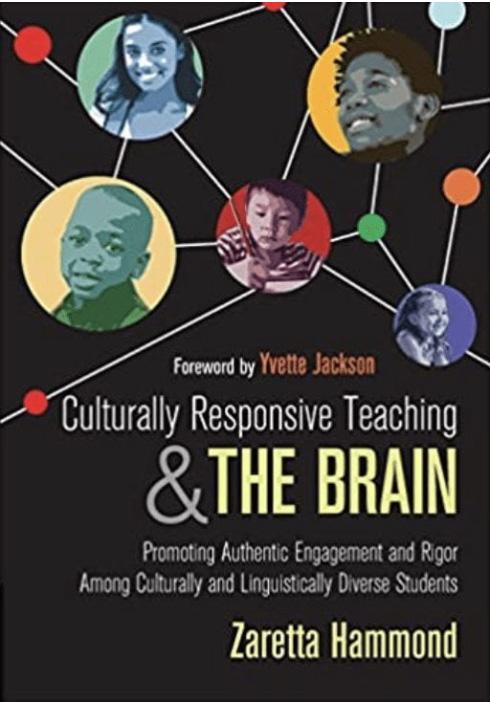
Hidden Figures
During the 1950s and 1960s, Katherine Johnson, Dorothy Vaughan, and Mary Jackson joined dozens of other African American women who crunched numbers and processed data for the National Advisory Committee for Aeronautics (NACA) and its successor, the National Aeronautics and Space Administration (NASA). All of these women, including the unnamed women from the West Area Computing Group, not only provided key resources to NASA, allowing for national advancement in space exploration but did so while having to fight for human rights.
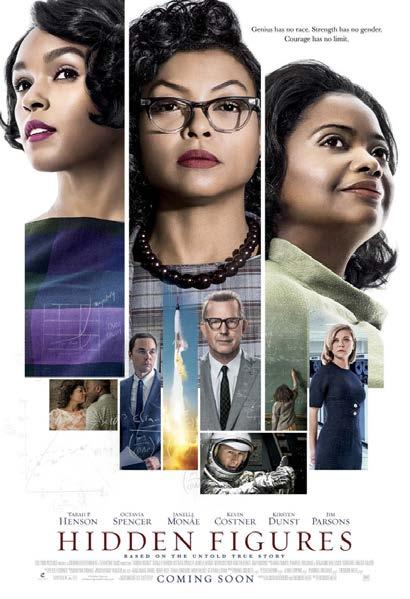

Thank you for reading!
Thank you for your interest in this basic guide, we hope that the content and practices contained within it are helpful to you and to our shared goal of advancing Liberatory STEAM Education. We provided a non-exhaustive list of resources that can guide you in this active learning journey.
We wan to help
At the STEAM Learning Institute, we focus on supporting educators with the tools and resources necessary to ensure Liberatory STEAM Education through a culturally responsive lens.
Check out our website at the STEAM Learning Institute and register to receive updates for more resources or opportunities to convene with educators to continue building the capacity for liberatory STEAM education.
Inquiries, thoughts to share?
This guide will continue to integrate feedback and case studies! If you have thoughts or examples of liberatory STEAM practices, contact us. We will continue to evolve and share an updated version on our website.
How can I support the STEAM Learning Institute?
We are a non-profit, and you can make a taxdeductible donation if you find value and benefit from this guide. You can donate to the institute to help us reach more educators and students.
Terms of Use
The written text(1) in the guide is licensed under Creative Commons (CC BY- NCND 4.0). This means you can copy and redistribute the text (but not the pictures) in any medium or format in strict accordance with the terms below.
Attribution: Give us credit(2), share a link to the guide, and indicate if any changes were made.
Non-Commercial Use: You can’t use this for any purpose that gives you a commercial advantage or monetary compensation.
No Derivatives: If you remix, transform, or build upon the material, you may not publicly distribute the modified material.
1. Photos and external resources are not included in this license. All rights reserved to respective copyright owners.
2. Use the following attribution: “Discover the Basics of Liberating STEAM Learning” by Imène Ghernati, STEAM Learning Institute, Burlingame, CA.


